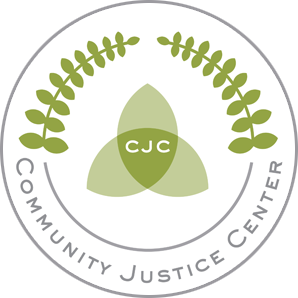Victims
Studies reveal many victims of crime feel victimized twice – once by the perpetrator and a second time unintentionally by the justice system.When a crime is committed we need to ask not only, “What laws were broken and how are we going to punish the offender?” but also, “What harm was done and who is responsible for repairing that harm?”
Restorative justice contributes to healing by those affected most: the victim.
At CJC, we elevate victim voices, through our pioneering surrogate victim impact curriculum and online victim harm statements. We provide victims of crime resources and opportunities to be a part of the Restorative Justice process.
Engaging victims, the offender, and the community encourages healing and restoration. It is powerful for a victim to be able to tell their story, be heard, and be understood.
By transforming language, an offender’s accountability is realized much faster, and the needs of victims are elevated and addressed first, not as a secondary thought.
Completing a victim harm statement helps the victim heal by allowing them the opportunity to communicate the effects of the harm and the impact it had on their life. The statements are also used by CJC as a powerful tool in justice-involved programming.
Restorative justice for victims:
Involvement in the justice process
Opportunity to tell their story, to be heard, and understood.
Opportunity to ask questions about the crime, such as: Was I targeted?, Will it happen again?, Am I safe?
Able to express anger and pain
Opportunity for healing and empowerment
There are many nationwide and Nebraska-specific resources available to victims. See resources available.
“How can we create opportunities for victims to be relieved of the fear that they may still have in situations where an offender is truly remorseful and eager to apologize and make amends. Many victims suffer needlessly for years because they have no way to know what has happened to the offender or what changes have occurred in the offender”.
-Kay Pranis, Restorative Justice Planner
Tell Your Story
Victim Harm Statement
Studies reveal many victims of crime feel victimized twice – once by the perpetrator and a second time unintentionally by the justice system. This leaves crime survivors feeling dissatisfied and treated unfairly. However, when crime survivors express their feelings, they report a significant increase in satisfaction that their voices were heard, not ignored, by the system which aids in their recovery process.
Members of the community, which includes friends and family members of offenders, often experience emotional trauma as a result of crime. These voices are almost never heard and these people silently hold the impact of the crime to themselves. This important perspective needs to be heard.
CJC offers victims and community members a web-based service that voices their experiences with the criminal justice system. We then use those testimonies as surrogate victim voices so offenders can understand the harm they’ve caused to victims like you. It’s only when offenders realize they’ve caused harm that they can begin to heal and change.It can be incredibly healing to know that you have a voice in the process and have an impact on future crime.
Ready to tell your story?
Your story will be read by other crime survivors like yourself; more importantly, by thousands of offenders during CJC Crime Victims Impact/Offenders Accountability classes.
When posting a CJC Impact Story, please do not use identifiable information such as names, dates or locations. Identifiable information will be deleted. Any violence or threats of violence will also be deleted.
Victim Resources
The community justice story is now a book!
This quick read sheds insight into how the author’s choices influenced his life journey into cocaine addiction, violence, crime and eventually his incarceration. In prison, the author was given a powerful gift that changed his course in life. Jim shares that gift...
Published research on Community Justice Center
International Journal of Offender Therapy and Comparative Criminology “Long-Term Effectiveness of a Brief Restorative Justice Intervention” Article Abstract Figure. Proportion of Recidivism Between Restorative Justice Intervention (RJI) and Treatment as Usual (TAU)...
Restorative Living
By Howard Zehr Take relationships seriously, envisioning yourself in an interconnected web of people, institutions and the environment. Try to be aware of the impact – potential as well as actual – of your actions on others and the environment. When your actions...
Resources for Victims of Crime
Local (Lincoln and Omaha) and State Safety Resources BraveBe Child Advocacy CenterThe BraveBe Child Advocacy Center is a non-profit organization providing a safe, child friendly location for conducting forensic interviews and medical evaluations for abused children in...
National Resources for Restorative Justice
In our country, we deal with many injustices —from the causes and consequences of mass incarceration, racial disparities, and the loss of public trust in law enforcement, to the unmet needs of the vulnerable, the marginalized, and those harmed by crime and violence....
Letter from Anne Seymour
Anne Seymour is a Co-founder and Senior Advisor of the Washington, D.C.-based non-profit Justice Solutions, specializing in criminal and juvenile justice, crime victims' rights and services, and community safety. Her current work includes public policy development,...
